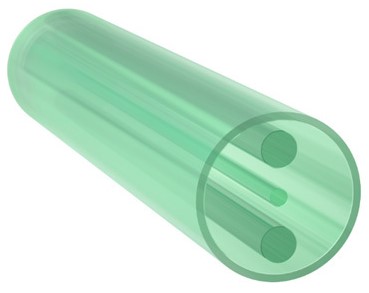Polarization-maintaining fibers are a crucial component in modern optical systems, where maintaining the polarization of light is essential for optimal performance. These specialized fibers are engineered to counter the effects of external perturbations, ensuring that the light traveling through them retains its polarization state. Whether in telecommunications, sensing, or quantum computing, PM fibers play a pivotal role in enhancing the accuracy and reliability of data transmission. But what exactly makes these fibers so effective, and why are PM maintaining cables becoming increasingly vital in cutting-edge technologies? Let’s delve into the fascinating world of polarization-maintaining fibers and uncover their significance in today’s rapidly evolving tech landscape.
1、Definition
Polarization-maintaining fibers is a fiber that has the property of keeping light transmitted in a certain direction. In layman’s terms, it can keep a fixed polarization direction of the light beam during transmission. This type of fiber is usually made of special materials and structures and is widely used in many application fields.
2、Structure
The structure of polarization-maintaining fibers is similar to that of ordinary optical fiber, but its internal structure is more complex and usually consists of more material layers. Polarization-maintaining fibers usually consists of a layer of central rod (core) and a layer of outer rod (cladding), in which the central rod is filled with a special material that can keep the light in a fixed polarization direction during transmission, achieving the effect of “polarization maintenance”.
3、Working Principle
The polarization-maintaining principle of polarization-maintaining fibers mainly relies on two mechanisms: the refractive index difference mechanism and the core electrode mechanism.
The refractive index difference mechanism is to use two materials with different refractive indices to sandwich together to form an optical waveguide. Because of their different refractive indices, the transmission direction of the light is restricted, thereby achieving the effect of polarization maintenance.
The core electrode mechanism controls the electric field of the photoelectric crystal by adding electrodes at both ends of the core, so that the polarization angle of the light remains consistent, thereby ensuring the polarization-maintaining performance of light transmission.
4、 Application
Polarization-maintaining fibers has extremely high optical quality and is widely used in communications, medical, automotive, industrial manufacturing and other fields. In the communications industry, polarization-maintaining fibers is widely used in high-speed, high-precision data transmission systems, which can reduce errors and distortion rates and improve data transmission quality and efficiency. In the automotive industry, polarization-maintaining fibers is mainly used in the optical systems of vehicles, such as on-board display screens, reversing images, etc., which can achieve high-definition and stable image transmission effects. In addition, polarization-maintaining fibers can also be used in laser cutting, laser welding, laser marking, special optical instruments and other fields.
5、End
Polarization-maintaining fibers is a high-precision optical device with the characteristic of maintaining the direction of light transmission. It is widely used in various fields such as communications, medical, automotive, industrial manufacturing, etc. With the continuous advancement of science and technology, the application prospects of polarization-maintaining fibers will become more and more extensive.











